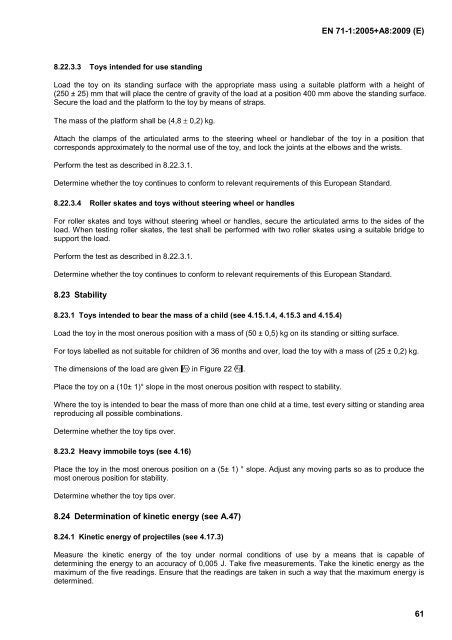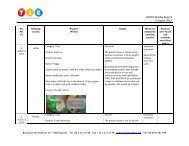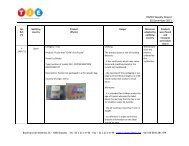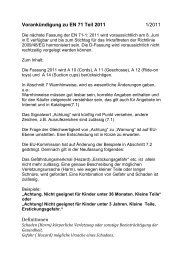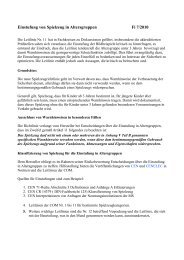You also want an ePaper? Increase the reach of your titles
YUMPU automatically turns print PDFs into web optimized ePapers that Google loves.
8.22.3.3 Toys intended for use standing<br />
<strong>EN</strong> <strong>71</strong>-1:<strong>2005+</strong><strong>A8</strong>:2009 (E)<br />
Load the toy on its standing surface with the appropriate mass using a suitable platform with a height of<br />
(250 ± 25) mm that will place the centre of gravity of the load at a position 400 mm above the standing surface.<br />
Secure the load and the platform to the toy by means of straps.<br />
The mass of the platform shall be (4,8 ± 0,2) kg.<br />
Attach the clamps of the articulated arms to the steering wheel or handlebar of the toy in a position that<br />
corresponds approximately to the normal use of the toy, and lock the joints at the elbows and the wrists.<br />
Perform the test as described in 8.22.3.1.<br />
Determine whether the toy continues to conform to relevant requirements of this European Standard.<br />
8.22.3.4 Roller skates and toys without steering wheel or handles<br />
For roller skates and toys without steering wheel or handles, secure the articulated arms to the sides of the<br />
load. When testing roller skates, the test shall be performed with two roller skates using a suitable bridge to<br />
support the load.<br />
Perform the test as described in 8.22.3.1.<br />
Determine whether the toy continues to conform to relevant requirements of this European Standard.<br />
8.23 Stability<br />
8.23.1 Toys intended to bear the mass of a child (see 4.15.1.4, 4.15.3 and 4.15.4)<br />
Load the toy in the most onerous position with a mass of (50 ± 0,5) kg on its standing or sitting surface.<br />
For toys labelled as not suitable for children of 36 months and over, load the toy with a mass of (25 ± 0,2) kg.<br />
The dimensions of the load are given -in Figure 22..<br />
Place the toy on a (10± 1)° slope in the most onerous position with respect to stability.<br />
Where the toy is intended to bear the mass of more than one child at a time, test every sitting or standing area<br />
reproducing all possible combinations.<br />
Determine whether the toy tips over.<br />
8.23.2 Heavy immobile toys (see 4.16)<br />
Place the toy in the most onerous position on a (5± 1) ° slope. Adjust any moving parts so as to produce the<br />
most onerous position for stability.<br />
Determine whether the toy tips over.<br />
8.24 Determination of kinetic energy (see A.47)<br />
8.24.1 Kinetic energy of projectiles (see 4.17.3)<br />
Measure the kinetic energy of the toy under normal conditions of use by a means that is capable of<br />
determining the energy to an accuracy of 0,005 J. Take five measurements. Take the kinetic energy as the<br />
maximum of the five readings. Ensure that the readings are taken in such a way that the maximum energy is<br />
determined.<br />
61


